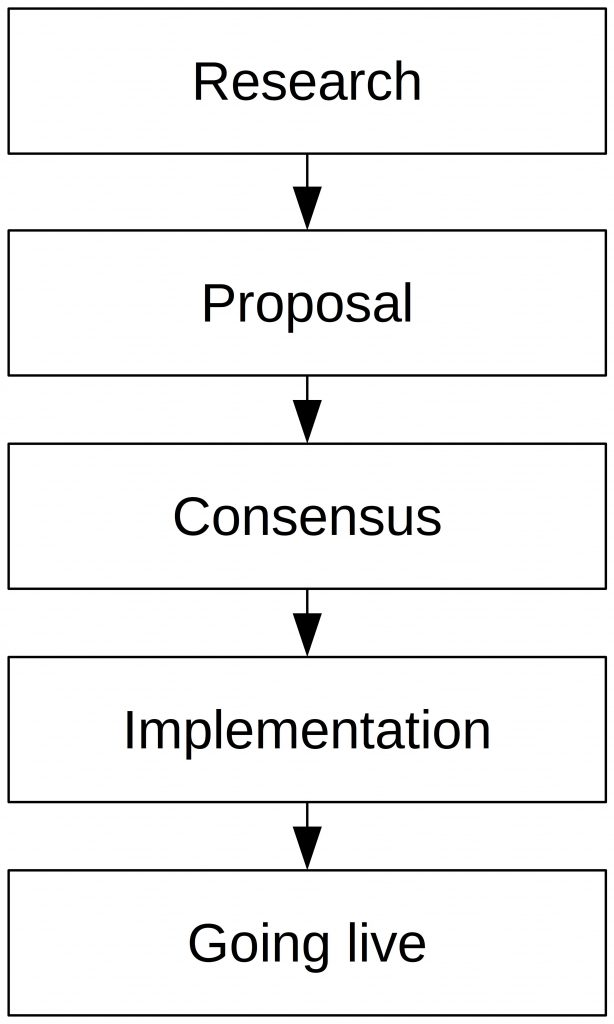Introduction to Blockchain Governance
Last Updated on 3. May 2023 by Martin Schuster
So far, we have learned that Bitcoin, Ethereum, and other blockchains are decentralized systems. This means they have no central authority making decisions, allowing nodes to join, routing transactions, etc.. But like every software, each blockchain needs updates and bug fixes. There are also standards necessary, how full nodes, wallets, miners, etc. communicate with each other. This leads us to the topic of governance.
Blockchain governance: Process by which block verification rules and APIs are decided upon.
In short
Blockchain governance is the consensus about the consensus.
As you can see, governance doesn’t only concern the consensus (block validation) rules. Instead, it also affects the communication between all kinds of nodes (miners, mining pool operators, wallets, full nodes) in the network. This is as important as the block verification rules. If nodes cannot communicate with each other, the network would fall apart.
Here, we explain the governance process of Bitcoin and Ethereum.
There are five basic steps in finding consensus.

- Research
At the beginning of each rule change, research is done. People have ideas for improvement; then they figure out how they can implement this idea. Usually, this takes quite a while. Depending on the topic, it might entail further changes to the protocol.
2. Proposal
Once an apparently satisfying solution to the problem statement is found, it is time to publish the idea and let the community decide upon it. In section Proposal, we describe this step in detail.
3. Consensus
The community now tries to agree on the changes to be made.
4. Implementation
If the voters accepted the proposal, it is implemented by the developers. Once, the code is in a productive state, nodes can apply it. This requires an update of their software.
5. Going live
Going live means installing the update and applying it. This process poses the risk of a fork.

 Register
Register Sign in
Sign in